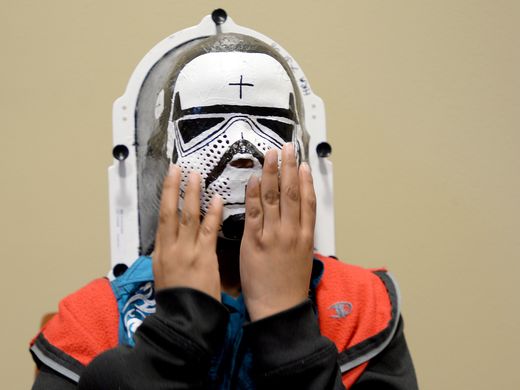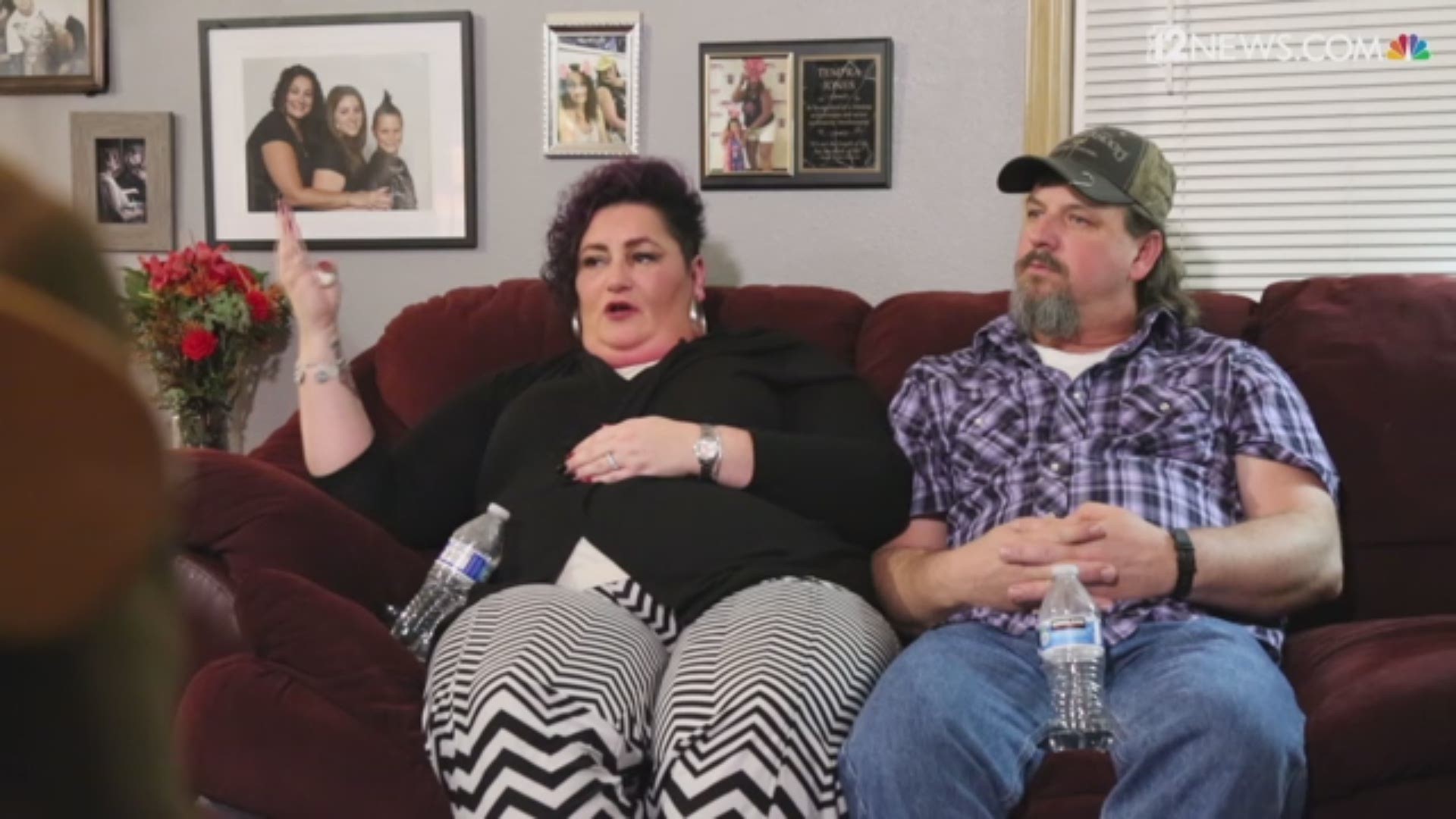![Special masks help kids be brave in tough times [video : 86273088]](http://videos.usatoday.net/Brightcove2/29906170001/2016/06/29906170001_4975858538001_video-still-for-video-4975831761001.jpg?pubId=29906170001)
GREENVILLE, S.C. -- A nasty headache was the first sign that something might be wrong with Darrell Bolt.
And when the 11-year-old began stumbling the next morning, his worried parents, Amanda and Jamey, took him to the doctor.
Tests would eventually reveal the terrifying news — an inoperable tumor on his brain.
Radiation treatments to shrink the tumor were scheduled immediately.
In order to spare unaffected parts of the brain, technicians fashion a white plastic mesh mask for patients to wear during treatment to keep them from moving while beams of radiation are directed at the tumor.
It’s an unpleasant experience at best. And at a frightening time.
So Jennifer Cook, a radiation therapist at Greenville Health System’s Cancer Institute, decided that the masks could at least be made to look like something fun.
Maybe Batman. Or Mickey Mouse. Or a fairy princess.
“I started thinking these masks are white and bland and not fun at all for kids,” she told The Greenville News.
“I felt like if we could make it a little more fun for them, they might be a little more excited about coming in for treatment,” she said. “Because the kids are scared.”
It came as no surprise to his parents that Darrell Bolt chose Batman for his mask. After all, he'd dressed up as the famous character for almost every Halloween of his life.
“I’ve loved Batman ever since I can remember,” he said, admiring the mask that Cook made for him.
“I love watching him beat up the Joker and Penguin and people like that,” he said. “(The mask) is pretty cool.”
Making a difference
Brain cancer in children is mercifully rare — about 5.4 cases per 100,000 children and adolescents, said Dr. Michael Greenbaum, a radiation oncologist with GHS.
But when it does occur, radiation is often the treatment used to fight it, mainly for inoperable tumors or those that are operable but have very high recurrence rates, he said. It’s used for some leukemias, as well.
And the mask is used to immobilize the head so the smallest amount of radiation necessary can be used, he said.
While the treatment itself isn't physically painful, it can generate a lot of anxiety, he said. And sometimes treatment is required daily and can last up to six weeks.
It takes a huge toll on the families, he said, noting the youngest children are anesthetized. And the masks really make a difference.
“The kids really like them,” Greenbaum said. “It makes what is, let’s face it, a horrible experience, a nice aspect of the experience, because they get to choose something ... themselves. It personalizes a mask that probably otherwise would look like it’s from Friday the 13th.”
Cook, who’s been with the Cancer Institute for five years, not only paints, she’s involved in other artistic endeavors as well, such as sewing and mosaics.
So when new children come in for treatment, she finds out who their favorite movie or cartoon characters are. In recent years, in addition to the ever-popular Superheroes, there’s been a string of Olafs and Elsas as well, she said.
Then she sets about creating the masks by transferring the image she wants onto tissue paper, adhering it with adhesive, and once it’s dry, applying the colors using acrylic paints.
Labor of love
Along with the character's face, she painstakingly designs special details on the sides, like a miniature Gotham City on the Batmam mask, star ships on the Star Wars Stormtrooper mask, or cupcakes, lollipops and animals, individualized for each child, who can take the mask home once treatment ends.
“Coming to the doctor is always needles and pain,” she said. “I wanted to make it fun.”
The Stormtrooper mask was a big hit with David Romero — it even glows in the dark.
“He really likes it,” his father, Eulogio Romero, said through interpreter John Kusguen. “It makes him feel better when he gets treatment.”
David, who’s just 7, suffers from leukemia and is half way through his 12 radiation treatments.
“When we found out he was going to start a new treatment, we got worried a little bit because we didn’t know what was radiation,” his father said. “But he’s looking forward to taking it (the mask) home with him and I think that’s going to be a good memory for him.”
Each labor of love takes about 20 to 30 hours to create, said Cook, 39.
“The kids really love it. It’s something they enjoy and can relate to,” said the Piedmont woman. “And it fills a creative interest I have.
“I get great pleasure from it.”
Darrell, who is now 12, will soon finish radiation by marking his 30th treatment. And he says the mask has been “awesome” through it all.
“It’s his favorite character,” says his mom. “And it makes it less scary for him. It’s not so overwhelming.”
![Humankind: Acts of Kindness [videoplaylist : 30538259]](http://videos.usatoday.net/Brightcove2/29906170001/2016/05/29906170001_4883143479001_video-still-for-video-4883062142001.jpg?pubId=29906170001)


![636022045524076905-635999634788156379-Mask-0000.JPG [image : 86253112]](http://www.gannett-cdn.com/media/2016/06/22/USATODAY/USATODAY/636022045524076905-635999634788156379-Mask-0000.JPG)
![Decorated masks help kids through radiation [gallery : 85051796]](http://www.gannett-cdn.com/-mm-/37e1bc778ac749f709daf06e5db8bf9ec5cfe60a/c=332-0-2668-1997/local/-/media/2016/05/27/CarolinaGroup/Greenville/635999634717636695-Mask-0.JPG)
